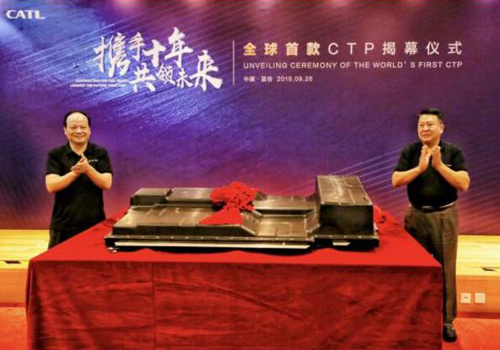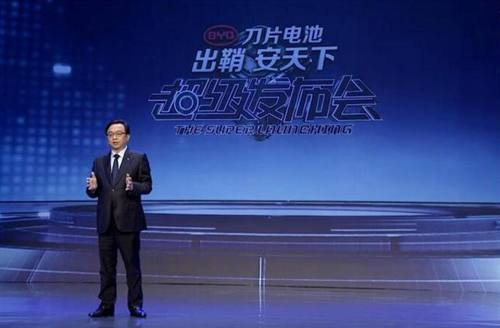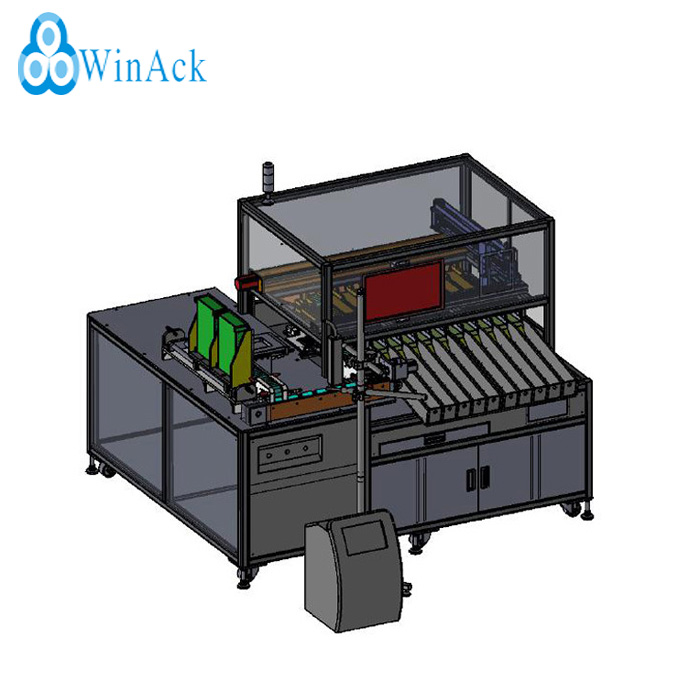Power battery costs account for 40% of electric car costs, or even more, and reducing power battery costs has been a key issue for electric car manufacturers and one of the most important tasks for battery suppliers. The existing battery pack structure usually consists of a three-stage structure, "cell-module-pack".
When several battery cells are combined together, they are called "battery module"; when several battery modules are combined together, together with BMS, distribution battery module and other parts, they become "battery pack". One of the main means of reducing costs for power battery is to reduce the cost of "modules", but today this means has reached a bottleneck.
CTP technology is known as Cell To Pack, or Module-less technology, and there are two different technology paths available. One is the program to eliminate modules altogether, as represented by BYD blade batteries. The second is a solution that integrates small modules into large modules, represented by CATL CTP technology.
On the one hand, CTP technology improves the space utilization rate of the battery pack and increases the charge capacity; on the other hand, it reduces the weight of the battery pack and increases the energy density of the whole battery pack.
What are the advantages of CTP technology?
1. Lightweight
The CTP technology minimizes the number of side panels, bottom panels, cables and wires inside the battery pack and between modules. Components such as beams, fixings, non-essential beams, longitudinal beams, etc. are very helpful for the light weight of the battery pack.
2.Battery energy density improvement
The first one is weight-to-energy density, which is also common to us; for example, the CTP technology of the CATL era can reach 200Wh/kg.

The second dimension is the volume-to-energy density, with BYD's CTP technology, for example, being able to increase the volume-to-energy density by 50% compared to the past, with different cell sizes of 439 Wh/L, 448 Wh/L, 449 Wh/L, and 450 Wh/L, respectively.

3. Low cost
In fact, one of the major driving forces behind the landing of CTP technology is the need to reduce the cost of power batteries. In BYD, for example, the cost of a new product can be reduced by 20-30%. This includes factors such as the cost of the battery pack itself, but also factors that simplify the production and assembly process, leading to a decrease in the defect rate. Although CATL did not reveal the cost advantage, the positive impact due to the 50% increase in production efficiency is clearly not negligible.
Some questions about CTP technology at this stage?
1.Battery crash safety
The traditional three-stage structure of the battery pack, because of the existence of the module, so the collision safety is an additional layer of protection. In the battery pack with CTP technology, the side beam of the pack is removed and the cells will directly bear the impact of the collision.
Using CATL as an example, the battery pack's frame is extruded directly from aluminum extrusions to increase strength; the plastic shell inside each large module is molded by injection molding, which embeds the heat sink in the box mold to achieve one-piece molding.
2.Battery thermal management
As new technologies change the structure of the battery pack, they will inevitably impose new design requirements and strategies on the battery's thermal management system, and even on the BMS system, which is a software-level consideration.
On a hardware level, BYD has designed new exhaust vents and exhaust passages for this battery pack. The vent holes are facing the explosion-proof valves on both ends of the battery pack, and when flame, smoke or gas is discharged from the explosion-proof valves, it passes through the vent holes into the exhaust passages and vented out of the battery pack. Existing battery packs do not have a similar venting channel design, so flames, fumes, or gases can easily collect in the module and damage the cells.
A similar design, in response to the more heat-prone lithium ternary batteries, each cell of the CATL CTP technology is built into the upper and lower housing. The middle of the housing is filled with a thermal conductive adhesive and there is a pressure or temperature sensor between the side walls of the cells and the housing. The former is used to detect changes in the shape of the cells, the latter is used to detect changes in temperature in order to troubleshoot faulty cells and to pre-empt thermal runaway of the cell.
3. After-sales maintenance convenience and cost
Because the cells are somehow fixed directly to the tray of the battery pack, future repairs will either require more skill, or the failure of one cell may require the replacement of the entire battery pack.
4.Battery consistency
CTP technology does place higher demands on the consistency of the battery. This also encompasses two aspects, the consistency of the cell production process and the consistency of the battery use process.
CTP technology can significantly increase battery energy density and improve the range of pure electric cars, which is a good thing for consumers. However, can CTP technology make our electric cars safer and cheaper? So far, there is still a question mark. The most basic and important aspect of safety is battery consistency.
As a high-tech company specializing in the lithium-ion battery pack assembly line and battery test equipment, Xiamen WinAck's automatic battery cell sorting machine can improve the consistency of battery cells and help the development of CTP technology.

Contact: WinAck
Phone: 0086- 188 0506 7911
Tel: 0086- 592 - 7297239
Email: timi@winack.com
Add: WinAck Group, Xiangbei Industrial Zone, Xiamen City, China